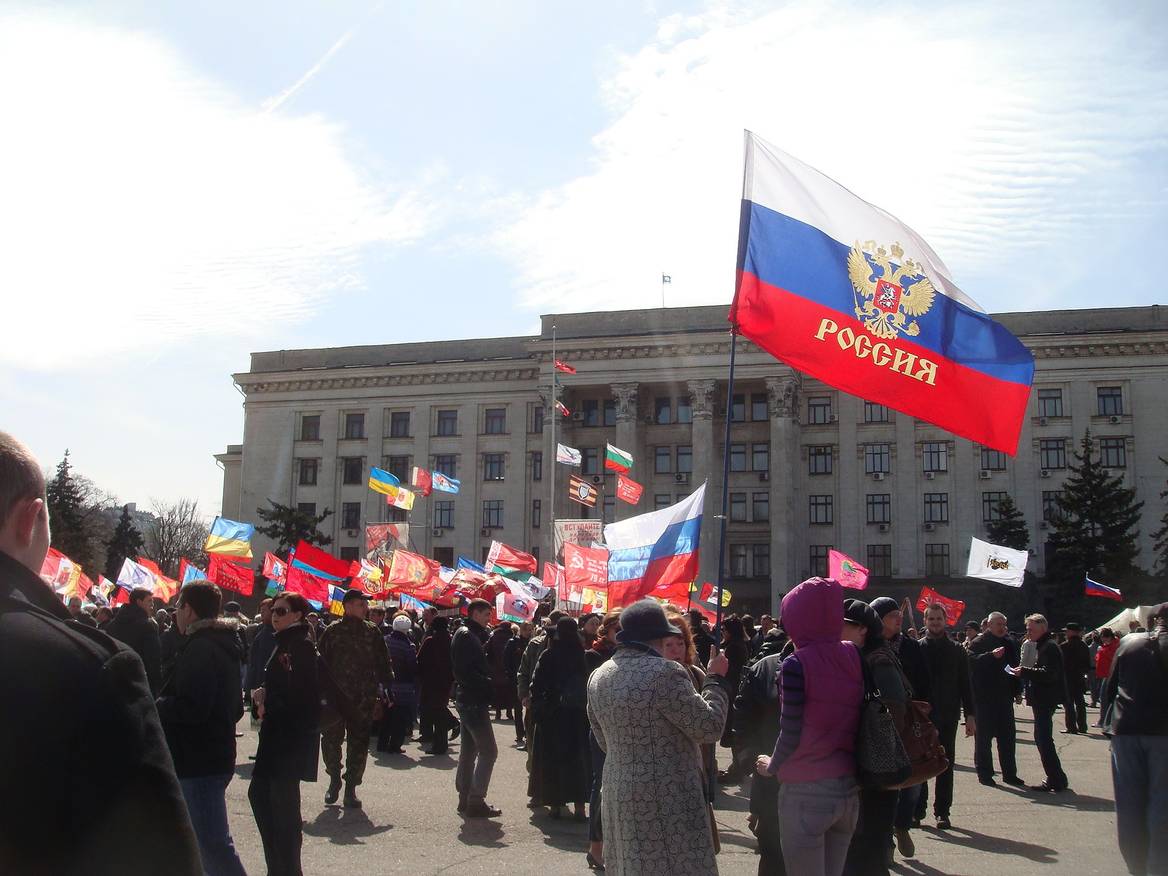The Surkov Leaks: The Inner Workings of Russia’s Hybrid War in Ukraine
An analysis of leaked emails from the Kremlin provides fresh insights on Russia's activities in Ukraine.
This paper provides a guide to Russian subversive warfare by examining, in detail, three tranches of leaked emails apparently belonging to Kremlin officials ─ including, primarily and critically, Vladislav Surkov, the man known as President Vladimir Putin’s ‘Rasputin’ ─ who have been closely involved with the Eastern Ukraine conflict, and in particular with the political and economic management of two statelets established by the Kremlin in Donetsk and Luhansk. In addition, it examines the strategy and tactics of Russia’s political subversion in the rest of Ukraine. Since the leaking of this information in the media, the emails have become known as ‘The Surkov Leaks’.
Chronologically, the leaks capture the period when Russia was pursuing its ‘Novorossiya’ (New Russia) project, from 2014 onwards, aiming to break off southeastern Ukraine. When this failed, save for the statelets that had been established in Donetsk and Luhansk, the Kremlin switched to promoting a separatist movement within Ukraine, the end goal of which was its federalisation. This campaign continues today.
The end goal of the Kremlin’s actions in Ukraine since 2013 has been to achieve political influence there and, ostensibly, to halt the country’s movement westward ─ which could ultimately result in accession to NATO. On the overt level, this was done via the puppet statelets of Donetsk and Luhansk. At the covert level, Russia interfered in Ukrainian elections, organised and funded a pan-Ukrainian campaign for a ‘soft federalisation’ of the country, attempted to change Ukraine’s constitution and establish an alternative centre of power, and created an illusion of widespread support for these activities. All of these activities were enabled by the intrinsic weaknesses of the Ukrainian state, aided by corruption and a collapse of state authority. The Kremlin also relied on two types of local actors: ideological allies and paid collaborators. The working frameworks for subversion were chiefly developed by Ukrainians, many of whom fled to Russia after Euromaidan. They had an insider’s view of the Ukrainian mind and knew the ‘weak spots’ to aim for.
In effect, Russia’s activity in Ukraine is a reinvention of ‘active measures’, a form of political warfare pioneered by the Soviet Union. The strategy for these active measures is closely linked to a concept known as ‘reflexive control’, a Soviet top-secret technique to manipulate an opponent into making decisions leading to their own defeat. For this, the Kremlin conducted painstaking research into the intricacies of Ukrainian daily life to understand the Ukrainian world view and identify vulnerabilities that could be exploited. Then, using media, front groups, provocateurs and paid rallies, it created a virtual reality designed to compel Ukraine into making decisions serving Russian objectives.
This Occasional Paper is designed to be an aid for researchers, academics, journalists, campaigners, and all those interested in the structure of political subversion, which at times is also called ‘hybrid warfare’. It has often been difficult to find hard evidence of Russian political manipulation, due to the covert nature of elements of this form of conflict. This paper presents leaked evidence, in a wealth of detail, to show a tactical snapshot of subversion, from the costs of demonstrations, to messaging lines, to the tactics of violent destabilisation.
The authors of this paper were not involved in the hacks that led to the leaking of emails allegedly belonging to Kremlin officials. However, the Russian toolkit of subversion is being used not only in Ukraine, but also in other former Soviet states seeking to leave Russia’s sphere of interest, and in Western states too. Therefore, it is overwhelmingly in the public interest that these emails should be examined in detail. It is essential to the future of those former Soviet countries – and to Western democracy writ large – to highlight the covert methods of subversion and control that are being used by the Kremlin. The leaked emails are therefore a unique contribution to the international debate over how the Kremlin ‘curates’ its ‘managed conflicts’. In analysing these emails, this paper also forms part of a wider debate about how authoritarian states use freedom to undermine free or partially free societies.

